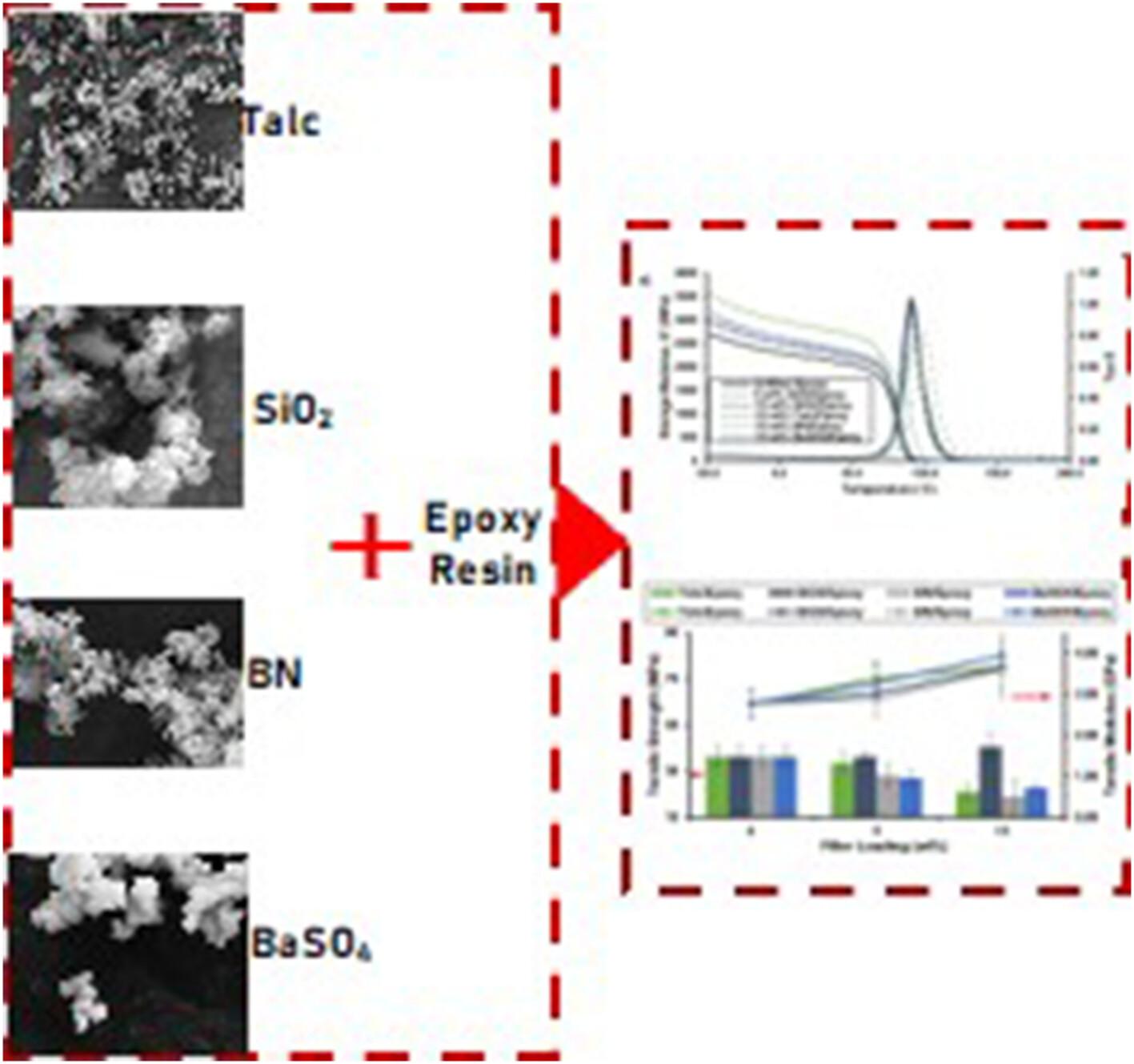求助PDF
{"title":"Thermo-mechanical properties of epoxy composites filled with inorganic particulate fillers for robust solder mask application","authors":"William Yung Ling Lim, Mariatti Jaafar, Ku Marsilla Ku Ishak, Karuna Chinniah, Wooi Keong Chan","doi":"10.1002/pi.6648","DOIUrl":null,"url":null,"abstract":"<p>Filler components play a crucial role as thermo-mechanical reinforcement to the epoxy-based solder mask, ensuring effective insulation and passivation. This study investigates the impact of different inorganic filler types (talc, silica (SiO<sub>2</sub>), boron nitride (BN) and barium sulfate (BaSO<sub>4</sub>)) and loadings (5 and 15 wt%) on the tensile and thermal properties of the epoxy composites. The composites were blended, cast and thermally cured. Of these composites, only 15 wt% SiO<sub>2</sub>/epoxy composite exhibits notable increments in both tensile strength and modulus, surpassing unfilled epoxy by 11.65% and 31.9%, respectively. It also displays the highest elongation at break, supported by small particle size, high specific surface area and minimal void volume fraction. For thermal tests, the addition of all fillers increases the storage modulus in both glassy and rubbery regions, especially 15 wt% talc/epoxy composite with 30.09% increment at 25 °C. Additionally, all fillers raise the glass transition temperature (<i>T</i><sub>g</sub>), notably improving it by 9 °C in the 15 wt% BN/epoxy composite. Moreover, their inclusion generally enhances the onset decomposition temperature (<i>T</i><sub>onset</sub>) and reduces weight loss during decomposition. © 2024 Society of Chemical Industry.</p>","PeriodicalId":20404,"journal":{"name":"Polymer International","volume":"73 9","pages":"779-788"},"PeriodicalIF":2.9000,"publicationDate":"2024-05-20","publicationTypes":"Journal Article","fieldsOfStudy":null,"isOpenAccess":false,"openAccessPdf":"","citationCount":"0","resultStr":null,"platform":"Semanticscholar","paperid":null,"PeriodicalName":"Polymer International","FirstCategoryId":"92","ListUrlMain":"https://onlinelibrary.wiley.com/doi/10.1002/pi.6648","RegionNum":4,"RegionCategory":"化学","ArticlePicture":[],"TitleCN":null,"AbstractTextCN":null,"PMCID":null,"EPubDate":"","PubModel":"","JCR":"Q2","JCRName":"POLYMER SCIENCE","Score":null,"Total":0}
引用次数: 0
引用
批量引用
Abstract
Filler components play a crucial role as thermo-mechanical reinforcement to the epoxy-based solder mask, ensuring effective insulation and passivation. This study investigates the impact of different inorganic filler types (talc, silica (SiO2 ), boron nitride (BN) and barium sulfate (BaSO4 )) and loadings (5 and 15 wt%) on the tensile and thermal properties of the epoxy composites. The composites were blended, cast and thermally cured. Of these composites, only 15 wt% SiO2 /epoxy composite exhibits notable increments in both tensile strength and modulus, surpassing unfilled epoxy by 11.65% and 31.9%, respectively. It also displays the highest elongation at break, supported by small particle size, high specific surface area and minimal void volume fraction. For thermal tests, the addition of all fillers increases the storage modulus in both glassy and rubbery regions, especially 15 wt% talc/epoxy composite with 30.09% increment at 25 °C. Additionally, all fillers raise the glass transition temperature (T g ), notably improving it by 9 °C in the 15 wt% BN/epoxy composite. Moreover, their inclusion generally enhances the onset decomposition temperature (T onset ) and reduces weight loss during decomposition. © 2024 Society of Chemical Industry.
填充了无机微粒填料的环氧树脂复合材料的热机械性能,用于焊接掩模的稳固应用
填料成分作为环氧基阻焊层的热机械强化剂,在确保有效绝缘和钝化方面发挥着至关重要的作用。本研究探讨了不同无机填料类型(滑石粉、二氧化硅 (SiO2)、氮化硼 (BN) 和硫酸钡 (BaSO4))和添加量(5 和 15 wt%)对环氧树脂复合材料拉伸和热性能的影响。这些复合材料经过混合、浇注和热固化。在这些复合材料中,只有 15 wt% 二氧化硅/环氧树脂复合材料的拉伸强度和模量都有显著提高,分别比未填充环氧树脂高出 11.65% 和 31.9%。此外,在小粒径、高比表面积和最小空隙体积分数的支持下,它还显示出最高的断裂伸长率。在热试验中,所有填料的添加都会提高玻璃态和橡胶态区域的储存模量,尤其是 15 wt% 的滑石粉/环氧树脂复合材料在 25 °C 时的储存模量提高了 30.09%。此外,所有填料都能提高玻璃化转变温度(Tg),15 wt% BN/epoxy 复合材料的玻璃化转变温度显著提高了 9 °C。此外,填料的加入还普遍提高了起始分解温度(Tonset),减少了分解过程中的重量损失。© 2024 化学工业协会。
本文章由计算机程序翻译,如有差异,请以英文原文为准。



